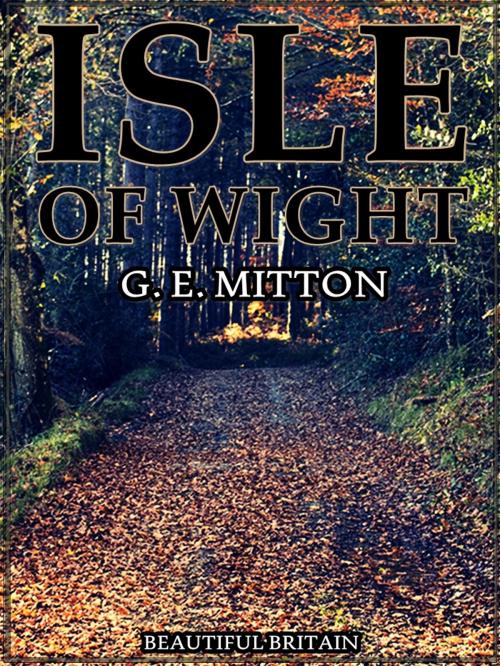Isle of Wight
Beautiful Britain
Nonfiction, Travel, Europe, Great Britain, History, British, Comics & Graphic Novels| Author: | Geraldine Edith Mitton | ISBN: | 1230000261535 |
| Publisher: | A & C Black | Publication: | August 20, 2014 |
| Imprint: | Language: | English |
| Author: | Geraldine Edith Mitton |
| ISBN: | 1230000261535 |
| Publisher: | A & C Black |
| Publication: | August 20, 2014 |
| Imprint: | |
| Language: | English |
Example in this ebook
CHAPTER I
THE ISLAND
Islands have always exercised a peculiar fascination over Englishmen, perhaps because, accustomed as they are to a sense of security induced by the surrounding sea, they never feel more comfortable than when the sea is on all sides at a measurable distance. It has been the ambition of many an Englishman to possess an island, however small, of his own. But England is not particularly blessed in this matter, and we may look with envy at the fringe of islands, large and small, precipitous and flat, scattered along the rugged shores of the west coast of Scotland. The only two English islands which can claim exceptional interest are the Isle of Man and the Isle of Wight. Of the other well-known ones, the Scilly Isles and Channel Isles are too inaccessible to count, Sheppey and Thanet and Holy Island too small, and Anglesea is separated by so very diminutive a channel from the mainland that it hardly seems like an island at all.
Of the two that stand pre-eminent the Isle of Wight cannot claim the peculiar customs and survivals that give the Isle of Man a special place, yet it has much charm of its own to compensate for this, and it otherwise fulfils all the conditions of what an island should be. It is separated from the mainland by a channel varying from one mile to six in breadth, a distance sufficient to give dignity but not to imperil approach. It is large enough to be supremely interesting, yet not so large as to be indigestible to the visitor who has only a short holiday at his disposal. It is, in fact, a little larger than London of the Boroughs and the County Council—that is to say, twenty-three miles by about thirteen, as against some seventeen by twelve. It is in shape an elongated diamond, with the extreme points lying eastward and westward, and it contains 93,341 acres. These acres are so diversified by hills and rivers, so broken up, that they count for twice as much as a flat surface of the same extent. The island, in fact, presents every variety of scenery, from richly wooded lanes, tiny inland villages bowered in greenery, high sweeping downs, to bold coast scenery, with chalk cliffs rising 200 feet above a sea often grand in the extreme. Ship-building at Cowes and cement works on the Medina are the only important manufactures, thus the fresh sea-air is untainted by smoke. Of the stone, Sir Richard Worsley, the chief island historian, says: "There are several quarries which produce varieties of stone applicable to different uses. Those near Quarr Abbey were once in such esteem as to furnish stone for building the cathedral at Winchester, as appears by a grant made by William Rufus to Walkelyne, Bishop of that diocese.... The stone continued in reputation till the reign of Edward III., and in the registers of Winchester it is recorded that William of Wykeham used it in building the body of that cathedral, whence it seems as if Portland stone was not then known, since it is certainly preferable to this both in colour and durability." Farms and fishing, chiefly for shell-fish and supplying the wants of numerous visitors, provide work for the inhabitants.
The island is also noted for its sheep, the mildness of its climate being suitable for early lambs, while the high chalk downs supply just the herbage most necessary for grazing. Naturally it follows that the trade in wool is good, and it has been so noted for many centuries. Drayton in his Polyolbion, speaking of the wool, says: "Not Leemster's self can show a finer fleece."
To be continue in this ebook................................................................................................................
Example in this ebook
CHAPTER I
THE ISLAND
Islands have always exercised a peculiar fascination over Englishmen, perhaps because, accustomed as they are to a sense of security induced by the surrounding sea, they never feel more comfortable than when the sea is on all sides at a measurable distance. It has been the ambition of many an Englishman to possess an island, however small, of his own. But England is not particularly blessed in this matter, and we may look with envy at the fringe of islands, large and small, precipitous and flat, scattered along the rugged shores of the west coast of Scotland. The only two English islands which can claim exceptional interest are the Isle of Man and the Isle of Wight. Of the other well-known ones, the Scilly Isles and Channel Isles are too inaccessible to count, Sheppey and Thanet and Holy Island too small, and Anglesea is separated by so very diminutive a channel from the mainland that it hardly seems like an island at all.
Of the two that stand pre-eminent the Isle of Wight cannot claim the peculiar customs and survivals that give the Isle of Man a special place, yet it has much charm of its own to compensate for this, and it otherwise fulfils all the conditions of what an island should be. It is separated from the mainland by a channel varying from one mile to six in breadth, a distance sufficient to give dignity but not to imperil approach. It is large enough to be supremely interesting, yet not so large as to be indigestible to the visitor who has only a short holiday at his disposal. It is, in fact, a little larger than London of the Boroughs and the County Council—that is to say, twenty-three miles by about thirteen, as against some seventeen by twelve. It is in shape an elongated diamond, with the extreme points lying eastward and westward, and it contains 93,341 acres. These acres are so diversified by hills and rivers, so broken up, that they count for twice as much as a flat surface of the same extent. The island, in fact, presents every variety of scenery, from richly wooded lanes, tiny inland villages bowered in greenery, high sweeping downs, to bold coast scenery, with chalk cliffs rising 200 feet above a sea often grand in the extreme. Ship-building at Cowes and cement works on the Medina are the only important manufactures, thus the fresh sea-air is untainted by smoke. Of the stone, Sir Richard Worsley, the chief island historian, says: "There are several quarries which produce varieties of stone applicable to different uses. Those near Quarr Abbey were once in such esteem as to furnish stone for building the cathedral at Winchester, as appears by a grant made by William Rufus to Walkelyne, Bishop of that diocese.... The stone continued in reputation till the reign of Edward III., and in the registers of Winchester it is recorded that William of Wykeham used it in building the body of that cathedral, whence it seems as if Portland stone was not then known, since it is certainly preferable to this both in colour and durability." Farms and fishing, chiefly for shell-fish and supplying the wants of numerous visitors, provide work for the inhabitants.
The island is also noted for its sheep, the mildness of its climate being suitable for early lambs, while the high chalk downs supply just the herbage most necessary for grazing. Naturally it follows that the trade in wool is good, and it has been so noted for many centuries. Drayton in his Polyolbion, speaking of the wool, says: "Not Leemster's self can show a finer fleece."
To be continue in this ebook................................................................................................................















